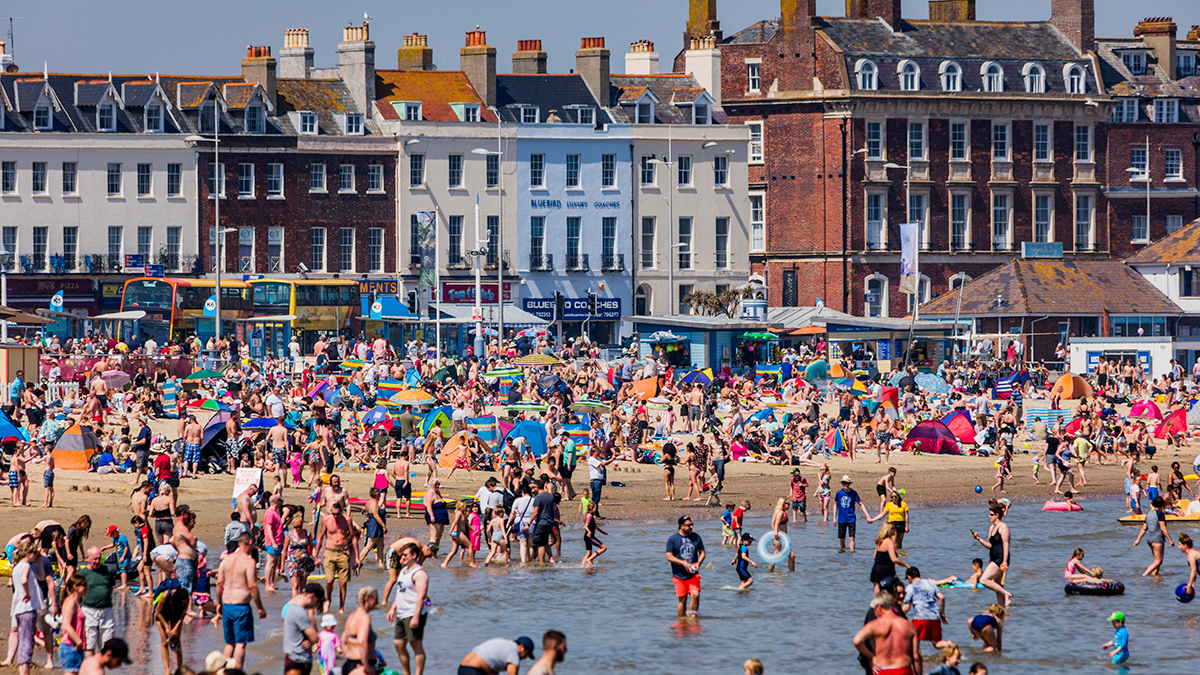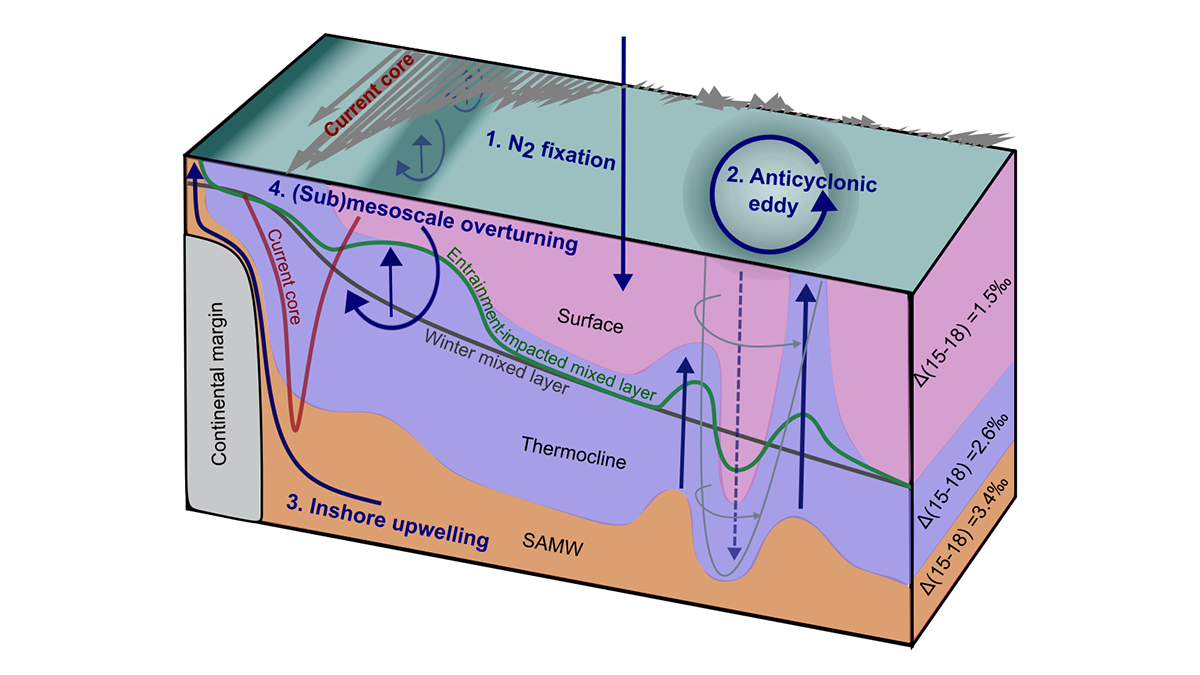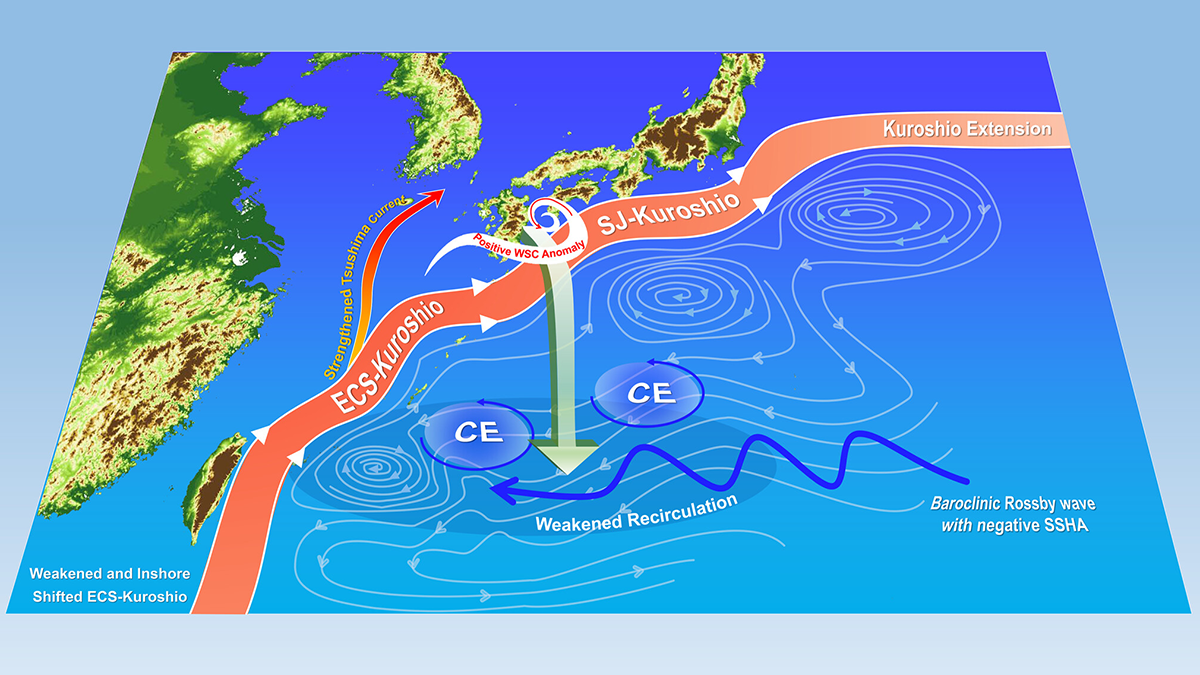Researchers mapped coral reef connectivity across the Seychelles archipelago to inform conservation efforts in the face of climate change.
currents
Verifying the Mathematics Behind Ocean Modeling
A series of test cases designed to confirm the accuracy of ocean models could help improve our understanding of large-scale climate processes.
Melting Ice in the Polar North Drives Weather in Europe
Influxes of meltwater into the North Atlantic eventually lead to warmer and drier conditions over Europe.
Mars as a Driver of Deep-Sea Erosion
An analysis of breaks in deep-sea sediment links the geological record to a 2.4-million-year cycle that heats Earth and ventilates our oceans.
Mapping the Ocean’s Motion Energy
The ocean is a central component of Earth’s climate system. But it is in perpetual motion, and understanding the transfer of kinetic energy is key to better ocean models.
Step Aside, Internal Tides: Supercomputer Modeling Improves Satellite Altimetry Precision
New supercomputer models can provide valuable information about the ocean’s layers and movements, particularly slow moving features such as eddies and currents.
How Nutrients Get Back Up to the Surface Ocean
A new dual isotope tracer technique is used to assess the role of a number of poorly understood nutrient supply mechanisms fueling biological productivity in the ocean.
Nutrients at Depth Can Be Uplifted by the Kuroshio Large Meander
Aperiodic, southward deflection of the Kuroshio, a.k.a. the Kuroshio large meander, uplifts the nutrients in deep layers to induce offshore phytoplankton bloom.
ENSO Variations Modulate the Kuroshio in the East China Sea
Recent warm El Niño Southern Oscillation events strengthened winds over the western Subtropical North Pacific, leading to planetary waves with cyclonic eddies, weakening the Kuroshio in the East China Sea.
Ocean Deserts Could Help Capture CO2 and Mitigate Global Warming
Various nutrient sources in the upper waters of oceanic subtropical gyres, which are the Earth’s largest oligotrophic ecosystems, play a crucial role in governing the sequestration of atmospheric CO2.










